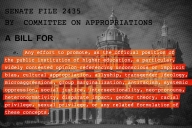You have /5 articles left.
Sign up for a free account or log in.

Igor Ilnitckii/iStock/Getty Images Plus
The United States has long been regarded as a primary study destination for Chinese students, but recent trends suggest that this is changing.
Over the last 20 years, U.S. colleges and universities have seen a fivefold increase in the number of Chinese students on their campuses, from roughly 60,000 in the 2000–01 academic year to more than 317,000 in the 2020–21 academic year, according to the Institute of International Education’s Open Doors data. Enrollment of students from China soared after the financial crisis in 2008 as a result of the country’s booming economy and a burgeoning middle class. Meanwhile, budget cuts across many American higher education institutions compelled their leaders to seek new revenue sources, and Chinese students quickly filled the gap, injecting billions of dollars into their host institutions and the U.S. economy.
In recent years, however, geopolitical tensions and the trade war between the United States and China cast a negative image of the United States as a study destination. The COVID-19 global pandemic, the subsequent surge of anti-Asian racism and the never-ending gun violence in the United States have furthered Chinese families’ concerns. The 15 percent drop in Chinese student enrollment at U.S. campuses during the pandemic was a wake-up call to many U.S. higher education leaders, suggesting the need for a more strategic approach to Chinese student enrollment rather than simply treating students as a source of revenue.
In the meantime, partial or full lockdowns in major cities across China this year due to the country’s “zero COVID” strategy, including in Beijing and Shanghai, have resulted in a steep economic downturn, threatening people’s livelihoods and raising questions about Chinese families’ ability to afford an expensive education abroad for their children.
Understanding the Complex Landscape of Family Funding
It is against this backdrop that the international admission team at Amherst College, which I lead, surveyed Chinese parents to gain a deeper understanding of the current thinking among Chinese families on affording an American education.
Of the 343 parents we surveyed in late June, 92 percent are parents of current high school students who plan to apply to college in the U.S. this fall or next fall (the other 8 percent are parents of new high school graduates who already completed the college admission process). A staggering 90 percent of parents indicated that they will be the primary source of funding for their children’s education in the United States.
While most Chinese parents are committed to funding their children’s U.S. education on their own, their income level varies greatly. Thirty-five percent of parents have an annual after-tax income between $74,740 and $149,481 based on the current exchange rate. Thirty percent bring home $14,948 to $74,739 annually, and 2 percent have an after-tax income below $14,948.
Most Chinese families are under the impression that if their children apply for financial aid at U.S. colleges, their chance of admission would be greatly reduced. Their concern is not unfounded, as there are only seven colleges in the United States that adopt a need-blind admission policy for both domestic and international applicants and that truly do not consider an international applicant’s ability to pay during the admission process— namely, Amherst, Bowdoin and Dartmouth Colleges; Harvard, Princeton and Yale Universities; and the Massachusetts Institute of Technology. Institutions that operate under a limited financial aid budget for international students are often compelled to distribute the funding to international students from less commonly represented countries on campus instead of China. This may inadvertently keep truly qualified Chinese students who may apply with significant financial need out of the door. There are also institutions that are explicit in their message that there is no funding available for any non-U.S. applicants, in which case, international students applying with need are usually denied.
Navigating the many different types of aid programs is not always clear to Chinese families. Forty-one percent of parents surveyed said that financial aid policies for international students at U.S. colleges are not transparent enough. Sixty-five percent indicated that they do not know much or anything about how financial aid works at U.S. colleges.
The unfamiliarity with how the system works and fear of being denied admission due to financial need have pushed Chinese parents to demonstrate that they are able to pay during the admission process, even if it means borrowing money from relatives and friends. An eye-popping 47 percent of parents surveyed have set aside a budget of $298,962 to $448,443 for a four-year college education in the United States. Eighteen percent have a budget between $448,444 and $597,925, and 4 percent have a budget over $597,925.
In other words, 69 percent of parents surveyed can, on paper, comfortably afford a four-year college education at most U.S. institutions, public or private. However, a deeper analysis revealed that even among these 69 percent of parents, 23 percent of them expressed the need for institutional financial aid to help them afford a four-year degree, suggesting their actual financial need may be higher than it appears.
Our survey revealed that 33 percent of all parents surveyed indicated that they need institutional financial support to afford a four-year degree. Fifty-eight percent of all parents surveyed expressed the desire for some form of financial support to alleviate financial pressure.
Furthermore, recent COVID lockdowns have impacted many families’ budget planning. Fifteen percent of parents indicated that their education budget has been severely affected by pandemic-related restrictions. The negative impact is felt most strongly among parents whose annual after-tax income is between $14,948 and $74,739: 30 percent of survey respondents in this group reported that their budgets have significantly shrunk. Sixty-three percent of all parents surveyed reported that their budgets have slightly decreased.
A New Mind-Set Is Needed at U.S. Colleges Toward Chinese Students
The survey findings point to a much more complex picture of how Chinese families plan to fund their children’s education in the United States. The prevalent mind-set of treating Chinese students as cash cows is not only detrimental to U.S. higher education’s reputation for academic excellence and quality but also dehumanizes Chinese students and diminishes their innumerable intellectual and social contributions to their host institutions and U.S. society.
Chinese families will continue to do all they can to support their children in pursuing the best possible education, given the country’s deep-rooted “education-first” culture that dates to the era of Confucius. But as global competition to attract this critical population increases, U.S. higher education institutions ought to come up with a more sustainable and inclusive strategy to recruit and enroll Chinese students. It is imperative more than ever to invest time and resources to understand their true needs and provide adequate support, including financial aid, to ensure their well-being as well as academic and career success.








